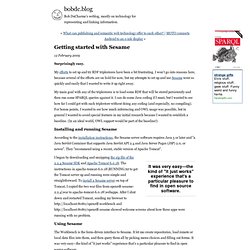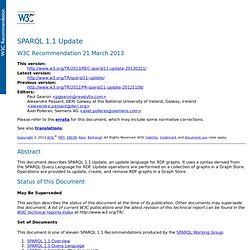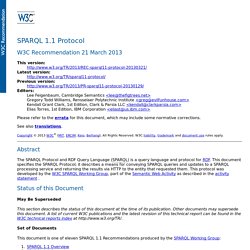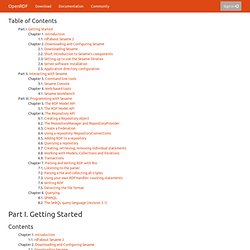

Getting started with Sesame. My efforts to set up and try RDF triplestores have been a bit frustrating.

I won't go into reasons here, because several of the efforts are on hold for now, but my attempts to set up and use Sesame went so quickly and easily that I wanted to write it up right away. My main goal with any of the triplestores is to load some RDF that will be stored persistently and then run some SPARQL queries against it. I can do some Java coding if I must, but I wanted to see how far I could get with each triplestore without doing any coding (and especially, no compiling). For bonus points, I wanted to see how much inferencing and OWL usage was possible, but in general I wanted to avoid special features in my initial research because I wanted to establish a baseline.
(In an ideal world, OWL support would be part of the baseline!) Installing and running Sesame It was very easy—the kind of "it just works" experience that's a particular pleasure to find in open source software. SPARQL 1.1 Update. Graph update operations change existing graphs in the Graph Store but do not explicitly delete nor create them.

Non-empty inserts into non-existing graphs will, however, implicitly create those graphs, i.e., an implementation fulfilling an update request SHOULD silently an automatically create graphs that do not exist before triples are inserted into them, and MUST return with failure if it fails to do so for any reason. (For example, the implementation may have insufficient resources, or an implementation may only provide an update service over a fixed set of graphs and the implicitly created graph is not within this fixed set). An implementation MAY remove graphs that are left empty after triples are removed from them. If a graph is created implicitly by an update operation, then the behavior of the Graph Store MUST be functionally equivalent to its behavior if the graph had been created explicitly by a CREATE operation. INSERT DATA QuadData ( GRAPH VarOrIri )? SPARQL 1.1 Protocol. 4.1 Security There are at least two possible sources of denial-of-service attacks against SPARQL protocol services.

First, under-constrained queries can result in very large numbers of results, which may require large expenditures of computing resources to process, assemble, or return. Another possible source are queries containing very complex — either because of resource size, the number of resources to be retrieved, or a combination of size and number — RDF Dataset descriptions, which the service may be unable to assemble without significant expenditure of resources, including bandwidth, CPU, or secondary storage.
In some cases such expenditures may effectively constitute a denial-of-service attack. A SPARQL protocol service may place restrictions on the resources that it retrieves or on the rate at which external resources are retrieved. SPARQL protocol services may remove, insert, and change underlying data via the update operation. Different IRIs may have the same appearance. SPARQL 1.1 Protocol. Research Semantics: Set up your own SPARQL endpoint with Sesame/OWLIM.
Can not create a OWLIM-Lite repository using the Sesame workbench - Ontotext Answers. OWLIM-Lite Installation - OWLIM54 - Ontotext Wiki. This section is for users and system administrators that are unfamiliar with the OWLIM-Lite semantic repository software.

The information contained in the following pages should be enough to get started with OWLIM-Lite, i.e. to install and configure the software so that repository instances can be created and used. OWLIM-Lite is packaged as a Storage and Inference Layer (SAIL) for the Sesame RDF framework. OWLIM-Lite can be used in two different ways: Library: One approach is to integrate OWLIM-Lite in an application using it as a library.
An example of doing this is given in the 'getting-started' folder of the OWLIM-Lite distribution zip file. The rest of this section gives detailed step by step instructions for installing and configuring Sesame and OWLIM-Lite, leading up to the creation of an OWLIM-Lite repository using the Sesame console (a command line script). OWLIM will normally be built against the latest version of the Aduna OpenRDF Sesame framework. Preparation Installation Tomcat. Openrdf. Part I.

Getting Started Chapter 1. Introduction 1.1. rdf:about Sesame 2 ¶ 1.1.1. Sesame is an open source Java framework for storage and querying of RDF data. Of course, a framework isn't very useful without implementations of the various APIs. Originally, Sesame was developed by Aduna (then known as Aidministrator) as a research prototype for the hugely successful EU research project On-To-Knowledge.
Sesame is currently developed as a community project, with Aduna as the project leader. OWLIM_SesameTutorialESWC06.pdf. OWLIMPrimer.pdf. Reasoning_web_linked_data.pdf.